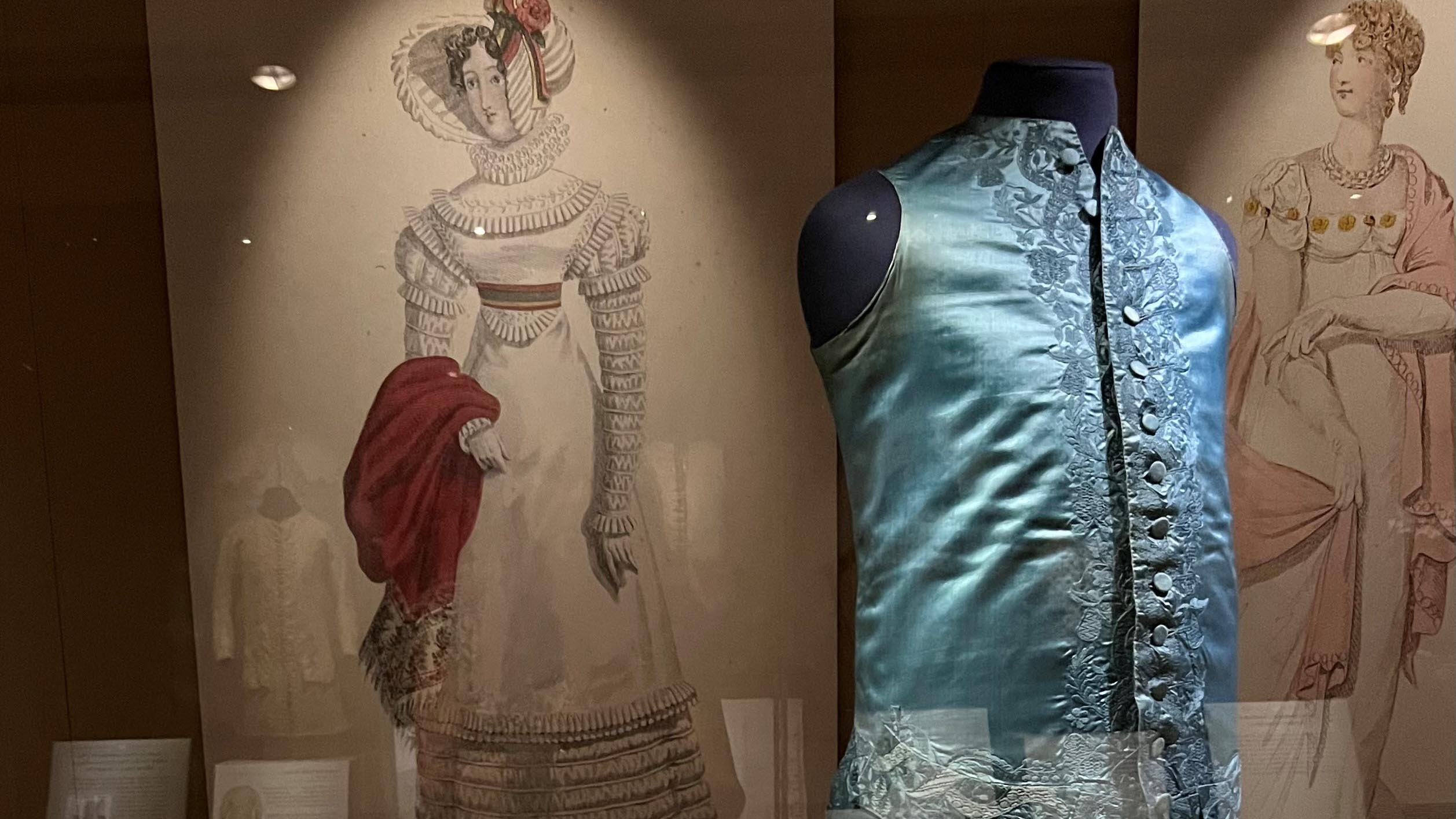
When Mary Doering received a trunk of Edwardian clothing from a great aunt on her 16th birthday in the late 1960s, it sparked a passion for historic dress that the curator and educator followed into a lifelong career.
Over the next 50 years, Doering amassed a collection of historic costumes considered one of the most comprehensive and important private collections in the United States.
Over 150 pieces from Doering’s collection will be on rotating display at Colonial Williamsburg’s DeWitt Wallace Decorative Arts Museum for the next three years.
Elegance, Taste, and Style: The Mary D. Doering Fashion Collection opened last month. Due to the light sensitivity of the artifacts, the installation will be shown in three year-long parts. Forty to 50 objects will be on view in low light during each part.
The collection is a treasure trove of educational and cultural resources, but according to Neal Hurst, Colonial Williamsburg’s curator of historic dress and textiles, the show is as much about how Doering “changed and evolved as a collector over the years” as the artifacts themselves.
Despite the educational value of the clothing, there’s still room to view the collection with an element of mystery and imagination.
Like most surviving historical clothing, none of the pieces on current display come with provenance—a record of origin and ownership. The people who made and wore the clothing are “anonymous and will be forever,” Hurst said.
However, proximity to Colonial Williamsburg presents an opportunity for these very vintage designs to have a second life of sorts.
Ellen Peltz with the Colonial Williamsburg Foundation appreciates the synergy of having access to the period artifacts.
Such relics can lead to better costume reproductions for Colonial Williamsburg interpreters and ultimately become “a full circle experience,” Peltz said.

Neal Hurst, Colonial Williamsburg’s curator of historic dress and textiles, poses with some of the Mary D. Doering Fashion Collection that will be on display on a rotating basis over the next three years at the DeWitt Wallace Decorative Arts Museum.
Doering began adding to her collection through flea market and antique shop purchases through the 1960s.
While studying in England, Doering had the opportunity to go to an auction at the legendary Christie’s and won her first waistcoat. Hurst said the acquisition “propelled her forward” as a serious collector.
As an intern at the Daughters of the American Revolution in Washington D.C., Doering met renowned antique fabric and clothing dealer Cora Ginsburg, who became her mentor for the next 20 years. According to Hurst, Doering’s approach to her work and the quality of her acquisitions shifted under Ginsburg’s mentorship.
Doering served on the faculty of The Smithsonian Institution’s Master’s Program in the History of Decorative Arts and taught fashion “through the objects in her collection,” Hurst said. In addition to costumes, Doering also collected textile documents and yard goods from the 18th century.
Items like fabric swatches convey “style, taste and fashion,” Hurst said, along with information about how fabric was printed or woven and changes in technology that allowed the items to be created.
The comprehensive nature of the Doering Collection is what makes it so remarkable. Pieces include gowns, suits and outerwear as well accessories, shoes, buttons and undergarments dating from around 1700 to the 1840s – the cut-off year for display in the museum.




